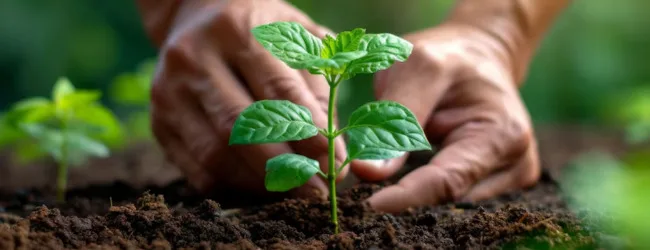Table of contents
In today’s world, farmers are increasingly shifting away from excessive chemical use and moving toward sustainable crop protection. While pesticides once seemed like the only solution to safeguard crops from pests and diseases, they come with harmful side effects. This has given rise to a holistic crop protection approach—one that preserves soil, enhances biodiversity, and protects human health.
What is Crop Protection?

Crop protection refers to all practices that safeguard crops from:
- Pests (insects, rodents, mites, etc.)
- Diseases (fungal, viral, bacterial infections)
- Weeds
- Environmental stress (drought, floods, wind, etc.)
Traditionally, pesticides have been the go-to method. However, they cause:
- Soil degradation
- Water pollution
- Resistance in pests
- Harm to pollinators like bees
- Human health risks
That’s why modern crop protection now focuses on a combination of eco-friendly, biological, mechanical, and cultural methods.
Why Shift Beyond Pesticides?

| Negative Effects of Chemical Pesticides | Holistic Alternative Benefits |
|---|---|
| Kills beneficial insects | Promotes biodiversity |
| Leads to pesticide-resistant pests | Reduces long-term pest risk |
| Pollutes soil and water bodies | Maintains soil and water health |
| Affects human health (e.g., cancer) | Safe for farmers and consumers |
| Expensive in the long run | Low-cost and sustainable |
💡 Pro Tip: If you want to start a Business but have too many doubts, connect with a Business expert from Boss Wallah for guidance – Check Out
Holistic Crop Protection: Key Components
1. Integrated Pest Management (IPM)
Definition: A strategic mix of biological, mechanical, cultural, and minimal chemical control to manage pests economically and with minimal environmental damage.
Key IPM Techniques:
- Monitoring: Regular field inspection to identify pest levels
- Threshold levels: Action only when pest numbers exceed the economic threshold
- Crop rotation: Breaks pest life cycles
- Biological control: Using natural enemies like ladybugs or parasitoid wasps
- Resistant varieties: Using pest-tolerant seed varieties
- Minimal pesticide use: Only when absolutely needed
🌟 Note-worthy Point: Studies show IPM can reduce pesticide use by up to 70% while maintaining or increasing crop yield.
2. Organic Farming Practices
- No synthetic inputs
- Use of compost, vermicompost
- Neem-based or cow urine-based sprays
- Green manuring
- Trap crops (e.g., planting marigold to attract pests away from the main crop)
3. Biological Control Agents
| Agent Type | Examples | Role |
|---|---|---|
| Predators | Ladybugs, lacewings | Eat harmful insects |
| Parasitoids | Trichogramma wasps | Lay eggs inside pest larvae |
| Pathogens | Bacillus thuringiensis | Infect and kill pests |
These natural enemies are non-toxic and sustainable.
4. Cultural Practices for Protection
- Crop diversification: Reduces pest buildup
- Sanitation: Removing infected plant material
- Timely sowing: Avoids peak pest seasons
- Soil solarisation: Covering soil with plastic to kill pests and pathogens using sunlight
5. Mechanical and Physical Barriers
- Sticky traps
- Insect-proof nets
- Hand removal of pests
- Deep ploughing to destroy pest larvae
6. Botanical Pesticides
Derived from plants like:
- Neem oil
- Garlic extract
- Chili spray
- Tobacco decoction
These are biodegradable, cost-effective, and safe.
7. Weather-Based Crop Protection Tools
Use of mobile apps and forecasting tools to:
- Alert farmers of possible pest outbreaks
- Recommend the best time for sowing or spraying
- Use AI and IoT sensors for precision protection
Example: Government of India’s mKisan app or Krishi Megh platform
ALSO READ | Farmer Registry in India: Key to Unlocking Government Schemes and Benefits
Table: Comparison of Crop Protection Methods
ALSO READ | What is Urban Farming? Practices, Challenges, Benefits & More
Benefits of Holistic Crop Protection

- Improved soil fertility
- Safe food production
- Reduced input cost
- Enhanced farmer income
- Biodiversity conservation
- Resilient farming against climate change
Real-World Example:
In Andhra Pradesh, the Community Managed Natural Farming (CMNF) program adopted holistic crop protection. Farmers reduced input costs by 40% and increased yields by 20–30%, proving that sustainability is both eco-friendly and profitable.
Need Expert Guidance?
Starting a business can be challenging, but you don’t have to do it alone! At Boss Wallah, our 2,000+ business experts are ready to provide valuable insights and guidance. Whether you need help with marketing, finance, sourcing, or any other area of any business, our business experts are here to help you succeed
Confused about Which Business to Start?
Want to start your own business but unsure which one to choose? Explore Boss Wallah, where you’ll find 500+ courses by successful business owners, featuring practical, step-by-step guides on starting and growing various businesses.
Find your perfect business idea today
Conclusion
Relying solely on pesticides is outdated and unsustainable. A holistic approach to crop protection—with IPM, biological agents, cultural practices, and modern tech—offers a long-lasting solution. It not only protects crops but also enriches soil, saves biodiversity, and secures farmer livelihoods. The future of farming lies in balance, not chemicals.
Frequently Asked Questions (FAQs)
1. What is crop protection?
It refers to methods used to prevent crops from pests, diseases, and environmental damage.
2. Why are pesticides harmful?
They can cause soil and water pollution, health hazards, and pest resistance.
3. What is Integrated Pest Management (IPM)?
IPM is a sustainable pest control strategy combining various methods with minimal chemical use.
4. Can I protect crops without chemicals?
Yes, using biological controls, organic methods, and mechanical barriers.
5. What are biological control agents?
Organisms like predators, parasitoids, and pathogens are used to kill harmful pests.
6. Are natural pesticides effective?
Yes, especially neem oil, garlic spray, and other botanicals.
7. What is the role of crop rotation in pest control?
It breaks the life cycle of pests, preventing buildup.
8. Is crop protection expensive?
Holistic methods are often cheaper than continuous pesticide use in the long term.
9. Can technology help in crop protection?
Yes, tools like forecasting apps and AI help monitor and manage pests better.
10. Is holistic crop protection suitable for small farmers?
Absolutely. Many techniques are low-cost and ideal for small landholders


